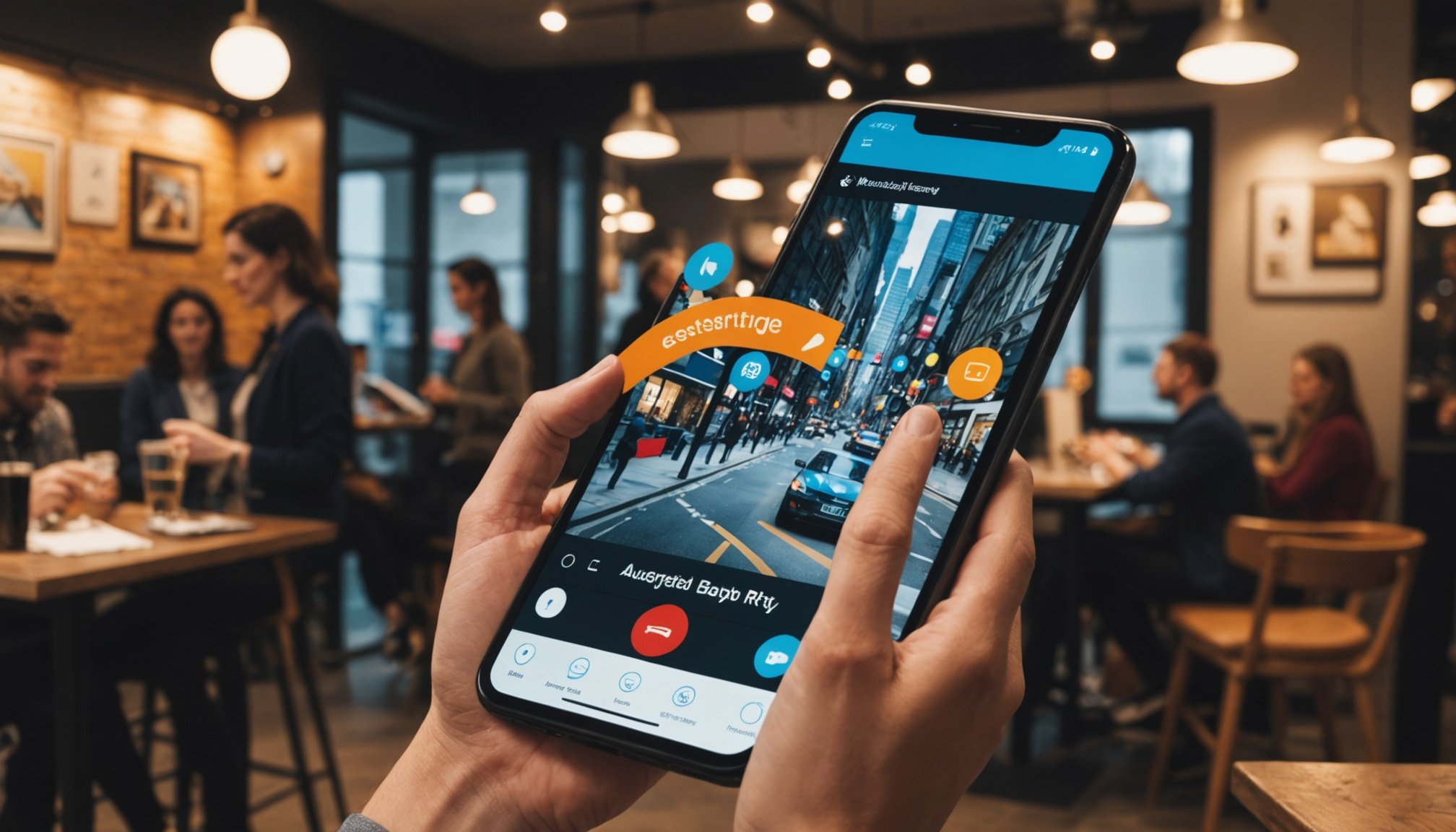Understanding Augmented Reality in Marketing
Augmented Reality (AR) is a technology that overlays digital information onto the physical world, enhancing users’ real-world experiences. In the context of marketing, AR serves as a potent tool by creating immersive experiences that captivate consumers. UK brands have been at the forefront of integrating AR into their marketing strategies, leveraging it to differentiate themselves in a competitive market.
Currently, several UK brands utilise AR to enhance consumer engagement and drive sales. For instance, fashion retailers allow customers to “try on” clothes virtually through AR apps, offering a unique blend of convenience and interaction. This has led to increased consumer satisfaction and reduced return rates.
This might interest you : Revolutionizing uk manufacturing: essential approaches for effortless ai integration
Statistics reveal that AR can significantly boost consumer engagement. A recent survey indicated that 61% of consumers prefer to shop at retailers that offer AR experiences. This technology fosters a deeper connection with consumers, leading to a 25% increase in conversion rates for brands employing AR in their marketing strategies. Ultimately, AR is not only transforming the landscape of retail marketing but also setting new standards for consumer interaction.
Essential Tactics for Implementing AR in Marketing Campaigns
Implementing Augmented Reality (AR) in marketing campaigns has transformed the marketing landscape, especially in the UK. To create successful AR implementation, it’s crucial to consider specific tactics.
This might interest you : Create stunning book covers with our free book mockup generator
Identifying Your Target Audience
An effective marketing tactic begins with understanding your target audience. Identify who will most benefit from and engage with the AR campaign. This requires analysing demographics and preferences, aligning the campaign’s focus with audience interests.
Integrating AR with Existing Marketing Channels
To make the most impact, integrate AR with existing marketing channels. Start by ensuring the AR elements complement other platforms like social media, websites, or apps. This seamless integration is vital for maintaining brand consistency and reaching a wider audience.
Creating User-Friendly Experiences
User experience remains paramount in AR implementation. Design AR features that are intuitive and easy to navigate, ensuring users can engage effortlessly. Prioritising an intuitive design enhances interactivity, keeping users engaged and interested in exploring more.
By adopting these tactics, businesses can ensure their UK campaigns stand out, effectively captivating and engaging their targeted audiences.
Case Studies of Successful UK AR Campaigns
Augmented reality (AR) has transformed the marketing landscape, with numerous successful campaigns capturing consumer attention in the UK. By examining several case studies, we can understand the implementation strategies and outcomes of these innovative ventures.
One notable example is the AR campaign run by fashion retailer Burberry. By integrating AR features into their app, Burberry allowed customers to virtually try on clothes, enhancing customer engagement and satisfaction. This interactivity fostered stronger brand loyalty and increased app downloads, demonstrating the power of AR technology in enhancing the shopping experience.
Similarly, in the automotive sector, Jaguar utilised an AR application to showcase their new car models. Potential buyers could visualise vehicles in their own driveways, greatly impacting brand perception positively by offering a personalised experience without visiting a showroom.
These case studies highlight the importance of AR in successful campaigns, showing how it can enhance customer loyalty and reshape brand perception. Lessons learned from these examples stress the significance of integrating AR seamlessly into existing platforms and ensuring it aligns with brand identity and consumer expectations. Such insights can serve as a blueprint for other brands looking to leverage AR in their marketing strategies in the UK.
Tips for Measuring the Success of AR Campaigns
Understanding how to measure success in augmented reality (AR) campaigns is crucial for marketers.
Key Performance Indicators for AR
In the realm of AR, identifying Key Performance Indicators (KPIs) such as engagement rates, interaction time, and conversion rates is vital. These KPIs help gauge the effectiveness of your campaign by offering concrete data points to evaluate user interest and action. Engagement rate helps track how frequently users interact with AR elements, while interaction time measures the duration of engagement. Conversion rates, on the other hand, reveal the success in achieving the desired action, like completing a purchase.
Tools and Technologies for Tracking AR Engagement
Several tools and technologies have been developed to help track AR engagement metrics. These include analytic platforms that can assess AR Metrics through heatmaps and user flow diagrams, offering insight into user behavior and preferences. Sophisticated software enables detailed analysis of campaign effectiveness by highlighting which elements resonate the most with users.
Analyzing Customer Feedback and Engagement
User feedback is a cornerstone in refining AR campaigns. Collecting and analyzing customer responses can direct improvements and enhancements. By valuing feedback, you ensure your campaign is continuously evolving to meet audience expectations, ultimately boosting its overall effectiveness.
Potential Pitfalls to Avoid in AR Campaigns
Augmented Reality (AR) offers incredible potential for marketing strategies but isn’t without its pitfalls. To succeed, it’s crucial to avoid common mistakes that can derail your campaign. Challenges often begin with misjudging the technology’s complexity. Many brands underestimate the intricacies involved, leading to user frustration. This can stem from incompatible devices, app crashes, or interface confusion.
To mitigate these issues, it’s essential to conduct continuous testing. Regular trials ensure the campaign operates smoothly across various platforms and devices. Furthermore, always prioritize user feedback. This input is invaluable for pinpointing technical hurdles and improving usability.
Adaptation is another cornerstone of successful AR marketing strategies. The digital landscape is ever-evolving, demanding campaigns to be dynamic. By being flexible and willing to make adjustments, brands can stay relevant and captivating. Incorporating real-time analytics can assist in this by monitoring user interactions and campaign performance.
In summary, avoiding AR pitfalls requires a proactive approach. Constant vigilance, strategic planning, and user-centric design are key to minimizing common issues. With these precautions, brands can harness the full potential of AR, delivering engaging and effective marketing experiences.











